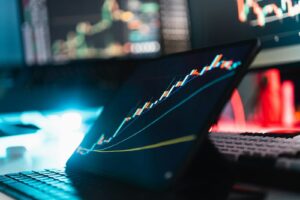As the United States celebrates its 249th Independence Day, Fidelity International’s Investment Director, Tom Stevenson, reflects on the evolving investment landscape in America.
For over a decade, the US stock market has led the global equity bull market, serving as the engine room of international investor confidence. Today, however, the investment case for the US appears more complex than it has in recent memory.
“It’s the fourth of July and investors are not short of reasons to make their portfolios more independent of American assets,” said Tom Stevenson. Notably, the first half of 2025 saw US investment fund outflows more than double to nearly $87 billion1 compared to the same period last year, according to Lipper Funds.
Some geographical rebalancing of portfolios is entirely understandable, not least because the strong performance of America’s stock market and economy in recent years had led US shares to account for about 70% of global indices, which many private savers in effect own via tracker funds.
Slower growth and shifting tides
Stevenson continues: “America’s growth advantage is narrowing. The first quarterly GDP contraction in three years signalled a change, and while the economy remains resilient, the outlook for the second half of the year is increasingly subdued.
“Overseas investors have poured money into the US for many years, rewarding its so-called exceptionalism. That tide has turned this year, with investors seeking to diversify their assets away from a country that seems less reliable and less of a safe haven than it has in the past. The newly transactional nature of the US’s relations with the rest of the world was well illustrated by the ‘liberation day’ tariffs and, more recently, a clause – section 899 – in the Trump administration’s ‘Big Beautiful Bill’, which could have seen America levying a heavy tax on investments held in the US by individuals and funds in countries that it considers to have imposed ‘unfair’ taxes on US companies. The clause was later scrapped following a G7 agreement with the US.
Valuations harder to justify?
“Other reasons some investors might consider reducing exposure to the US include America’s apparent indifference to its seemingly uncontrollable debts and deficit. Spending significantly more than the government takes in taxes at a time when the economy is firing on all cylinders and needs no support is unsustainable. All of this makes America’s valuation premium to the rest of the world’s equity markets harder to justify.
Reasons for resilience remain
“Despite these headwinds and a series of shocks in the first six months of 2025, the case for continued US exposure is far from over. The S&P 500 and tech-focused Nasdaq are once again trading at record levels, meaning the US is rapidly closing the gap with European stocks that emerged earlier in the year. There is a lesson here in not obsessing over rolling news but instead keeping an eye on the investment horizon. Investing has always been the ‘triumph of the optimists’.
The US still enjoys favourable demographics, a dynamic and innovative economy, energy independence, and a large domestic market. Regulation remains business-friendly, and the entrepreneurial culture is unmatched.
Exceptionalism evolving, not erased
“There’s a lot to be concerned about. But the US remains a powerhouse in global financial markets, and that is unlikely to change any time soon. US exceptionalism was built over decades; it will not disappear in a matter of months.”
Portfolio Ideas
For investors looking for pure US exposure, Fidelity’s Select 50 list includes:
- Legal & General S&P 500 US Equal Weight Index Fund
- Dodge & Cox Worldwide US Stock Fund
For investors seeking a broader globally diversified portfolio, Fidelity’s Select 50 list includes:
· Fidelity Global Dividend Fund – 24.5% US allocation
· Schroder Global Recovery Fund – 33.4% US allocation















